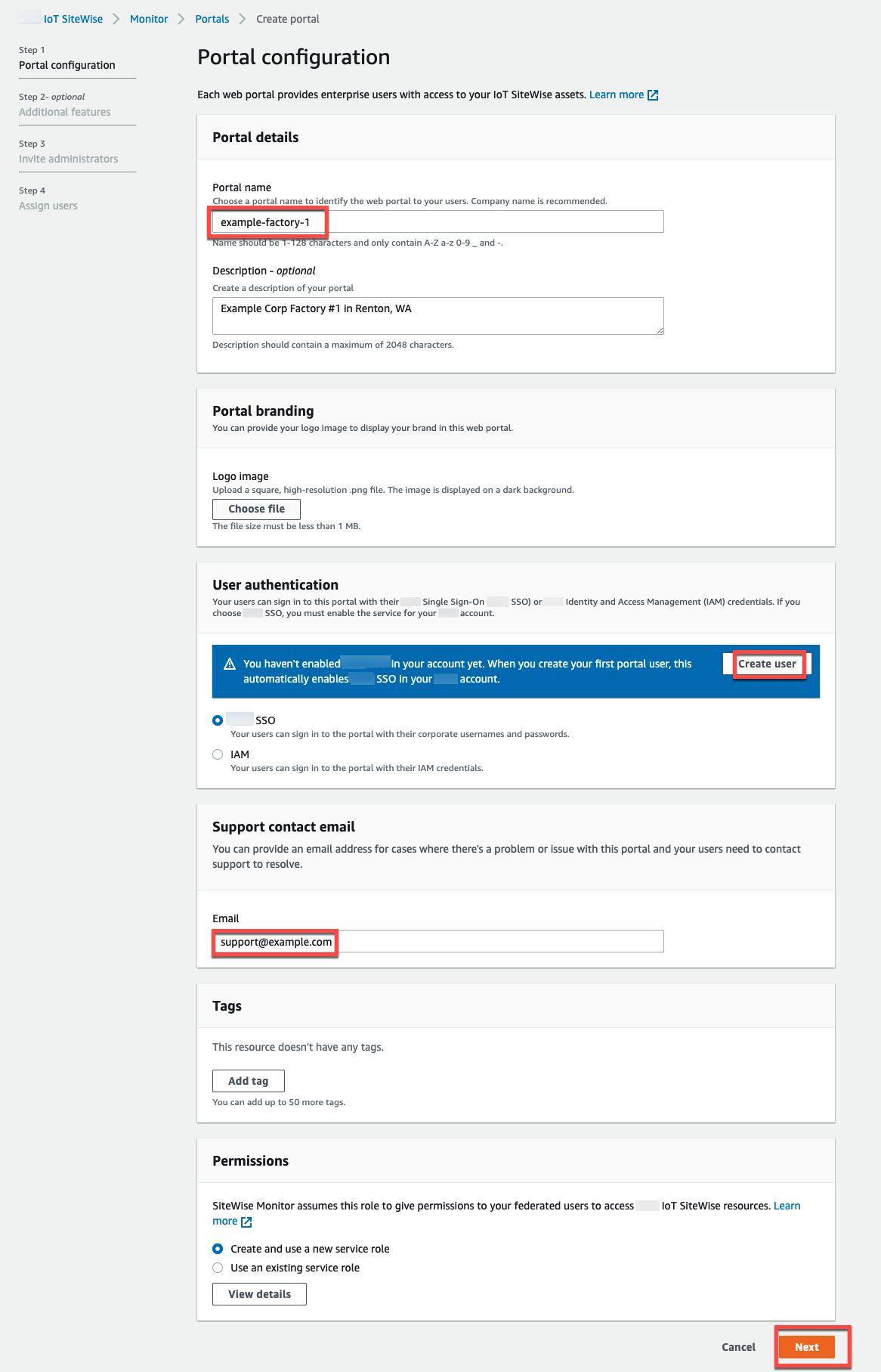Configure your portal in SiteWise Monitor
Note
The SiteWise Monitor feature is no longer available to new customers. Existing customers can continue to use the service as normal. For more information, see SiteWise Monitor availability change.
Your users use portals to view your data. You can customize a portal's name, description, branding, support contact email, and permissions.

To configure a portal
-
Enter a name for your portal.
-
(Optional) Enter a description for your portal. If you have multiple portals, use meaningful descriptions to help you keep track of what each portal contains.
-
(Optional) Upload an image to display your brand in the portal. Choose a square, PNG image. If you upload a non-square image, the portal scales the image down to a square.
-
Enter an email address that portal users can contact when they have an issue with the portal and need help to resolve it.
-
(Optional) Add tags for your portal. For more information, see Tag your Amazon IoT SiteWise resources.
-
Choose one of the following options:
-
Choose Create and use a new service role. By default, SiteWise Monitor automatically creates a service role for each portal. This role allows your portal users to access your Amazon IoT SiteWise resources. For more information, see Use service roles for Amazon IoT SiteWise Monitor.
-
Choose Use an existing service role, and then choose the target role.
-
-
Choose Next
-
Choose Create. Amazon IoT SiteWise will create your portal.
Note
If you close the console, you can finish the setup process by adding administrators and users. For more information, see Add or remove portal administrators in Amazon IoT SiteWise. If you don't want to keep this portal, delete it so it doesn't use resources. For more information, see Delete a portal in Amazon IoT SiteWise.
The Status column can be one of the following values.
-
CREATING - Amazon IoT SiteWise is processing your request to create the portal. This process can take several minutes to complete.
-
UPDATING - Amazon IoT SiteWise is processing your request to update the portal. This process can take several minutes to complete.
-
PENDING - Amazon IoT SiteWise is waiting for the DNS record propagation to finish. This process can take several minutes to complete. You can delete the portal while the status is PENDING.
-
DELETING - Amazon IoT SiteWise is processing your request to delete the portal. This process can take several minutes to complete.
-
ACTIVE - When the portal becomes active, your portal users can access it.
-
FAILED - Amazon IoT SiteWise couldn't process your request to create, update, or delete the portal. If you enabled Amazon IoT SiteWise to send logs to Amazon CloudWatch Logs, you can use these logs to troubleshoot issues. For more information, see Monitoring Amazon IoT SiteWise with CloudWatch Logs.
A message appears when your portal is created.

Next, you must invite one or more portal administrators to the portal. So far, you created a portal but no one can access it.